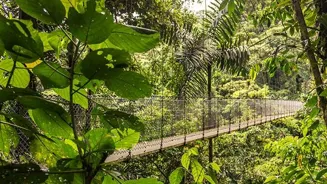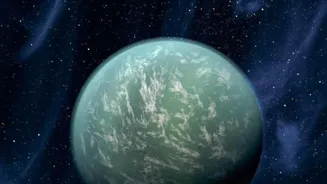Delve into the fascinating world of dinosaurs! Learn surprising facts that will spark curiosity in young and old alike
Namaste, readers! Get ready to travel back millions of years to a time when giant reptiles
roamed the Earth. Dinosaurs have captured our imaginations for generations, and for good reason! They were incredible creatures, and scientists are still discovering new things about them every day.
Today, we’re bringing you 10 fun facts that are sure to wow both dino enthusiasts and those just beginning their prehistoric journey. So, buckle up, and let’s dig in!
Dinosaurs Lived on Earth for a Very Long Time!
Imagine this: humans have only been around for a few million years, but dinosaurs ruled the planet for about 180 million years! That's a mind-bogglingly long time.
They appeared during the Triassic period, all the way back about 252 million years ago, and they thrived until the end of the Cretaceous period, roughly 66 million years ago.
Think about the changes our planet has gone through in just the last few centuries – technology, cities, populations – and then try to picture that multiplied by nearly two hundred million years. It’s like dinosaurs had a really, really long innings on the pitch of Earth!
They saw continents shift, climates change, and evolved into countless different shapes and sizes. From the tiny Microraptor to the colossal Argentinosaurus, the dinosaur era was a time of incredible biodiversity and adaptation. It truly puts our own time on Earth into perspective.
Not All Dinosaurs Were Giants!
When we think of dinosaurs, images of enormous creatures like the T-Rex often come to mind. But the truth is, many were actually quite small. Some dinosaurs were only the size of chickens, or even smaller!
Think about the Compsognathus, a predator about the size of a pigeon – definitely not going to be starring in any monster movies! The variety of dinosaurs was really amazing, and they came in all sorts of shapes and sizes to fit the different places they lived.
These smaller dinosaurs were often incredibly speedy and agile, using their size to their advantage for hunting insects, small reptiles, and even baby dinosaurs. So next time you think of dinosaurs, remember that they weren't all thunderous behemoths; some were just tiny terrors!
Don’t be misled by Jurassic Park!
Dinosaurs Weren't Just Reptiles - They Were More Like Birds!
For years, dinosaurs were thought to be big, scaly reptiles. But recent discoveries have revealed that many dinosaurs, especially those more closely related to birds, actually had feathers!
Scientists have found fossil evidence of feathered dinosaurs like Sinosauropteryx, showing that feathers weren’t just for flying – they could also be used for insulation and display.
In fact, birds are now considered to be direct descendants of a group of theropod dinosaurs, which includes the infamous T-Rex! So, the next time you see a robin hopping around your garden, remember that it shares a family tree with some of the most fearsome predators that ever walked the Earth.
It also changes how we perceive dinosaurs – from scaly monsters to perhaps more colourful, bird-like creatures.
The T-Rex Had Tiny Arms For a Good Reason!
Ah, the Tyrannosaurus Rex! The king of the dinosaurs, known for its massive size and powerful bite. But there’s one thing that always makes people giggle: its teeny-tiny arms.
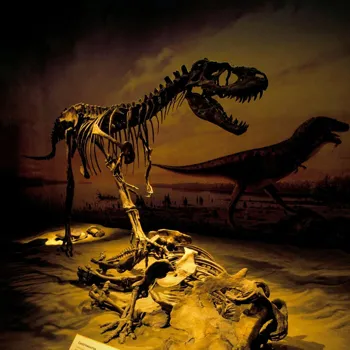
Scientists have been scratching their heads for years trying to figure out why this apex predator had such ridiculously small limbs.
Some theories suggest that the arms were used for grasping during mating, while others think they were vestigial – meaning they served no purpose and were gradually reduced in size over time.
A more recent theory, and a pretty convincing one, is that the T-Rex evolved to have powerful jaws and a massive head. The bigger the head and its muscles, the smaller the arms had to be! Think of it like a trade-off: more power in the bite, less power in the arms.
No matter the reason, those tiny arms are definitely one of the T-Rex's most defining and endearing features.
There Were Plant-Eating Dinosaurs Too!
We often hear about the meat-eating dinosaurs, like the T-Rex and Velociraptor, but the truth is, most dinosaurs were actually herbivores! These gentle giants roamed the Earth, munching on plants and keeping the ecosystem in balance.
Dinosaurs like the Stegosaurus, with its iconic plates and spiky tail, and the Brachiosaurus, with its long neck and enormous size, were gentle giants that played a crucial role in the prehistoric world.
They would chow down all types of shrubs and other plants, and their poop would act as fertilizer for new plants to grow! Herbivores didn't have the sharp teeth and claws of their carnivorous counterparts, they had other ways to protect themselves!
We can thank the giant herbivores for keeping the planet green back when dinosaurs roamed the Earth.
Scientists Can Tell What Dinosaurs Ate From Their Fossilized Poop!
Believe it or not, fossilized dinosaur poop, also known as coprolites, provides scientists with valuable insights into what dinosaurs ate. By studying the contents of these ancient droppings, paleontologists can determine the types of plants and animals that dinosaurs consumed.
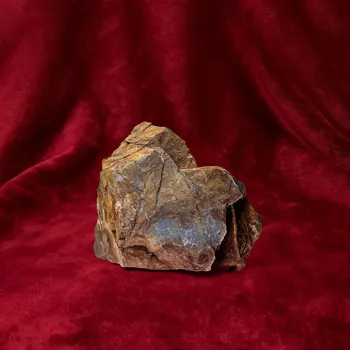
For example, if a coprolite contains fossilized bone fragments, it indicates that the dinosaur was a meat-eater. And if it contains plant matter, it suggests that the dinosaur was a herbivore.
Analysing coprolites is not a glamorous job, but it is important and helps a lot to learn more about where these giant creatures were living and what they were eating. They can even tell a lot about the health of a dinosaur! It's a smelly job, but someone's gotta do it!
Some Dinosaurs Were Super Smart!
While dinosaurs may have been big and scary, some may have actually been quite intelligent. The Troodon is considered one of the smartest dinosaurs, thanks to its large brain size relative to its body.
Scientists have even speculated that if the dinosaurs had not gone extinct, the Troodon might have eventually evolved into a humanoid species! Another dinosaur believed to be relatively clever was the Velociraptor. It was known for its cunning hunting strategies and its ability to work in packs.
These clever dinosaurs may have been able to solve complex problems, communicate effectively with each other, and adapt to changing environments. While we may never know for sure just how smart dinosaurs were, we know that they were more than just mindless reptiles.
A Giant Asteroid Caused the Dinosaur Extinction!
The reign of the dinosaurs came to an abrupt end about 66 million years ago, in what is known as the Cretaceous-Paleogene extinction event. This event was caused by a massive asteroid that slammed into the Earth near what is now the Yucatán Peninsula in Mexico.
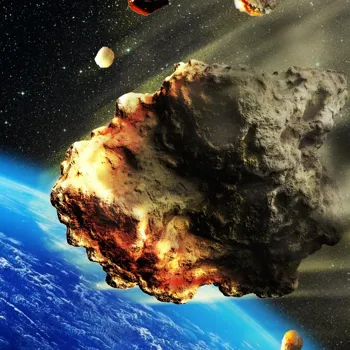
The impact caused widespread devastation, including massive earthquakes, tsunamis, and wildfires. It also threw huge amounts of dust and debris into the atmosphere, blocking sunlight and causing a global winter that lasted for years.
This led to the collapse of the food chain and the extinction of approximately 76% of plant and animal life on Earth, including the non-avian dinosaurs. While it was a tragic event, it paved the way for the rise of mammals, including humans.
We're Still Discovering New Dinosaurs All The Time!
Even though dinosaurs went extinct millions of years ago, scientists are still discovering new species and learning more about these amazing creatures. Every year, paleontologists unearth countless fossils that provide valuable insights into dinosaur evolution, behaviour, and ecology.
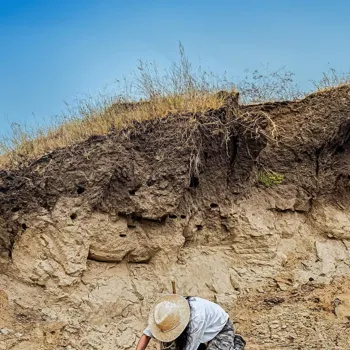
Some of the most recent dinosaur discoveries include new species of feathered dinosaurs, giant sauropods, and horned dinosaurs. These discoveries help us refine our understanding of the dinosaur world and piece together the puzzle of their existence. So much to learn still!
Because the Earth has existed for millions of years, we have to dig deep for a lot of discoveries.
You Can See Real Dinosaur Fossils in Museums!
One of the best ways to experience the wonder of dinosaurs is to visit a natural history museum and see real dinosaur fossils up close. Museums around the world house impressive collections of dinosaur bones, skeletons, and footprints, providing visitors with a glimpse into the prehistoric world.
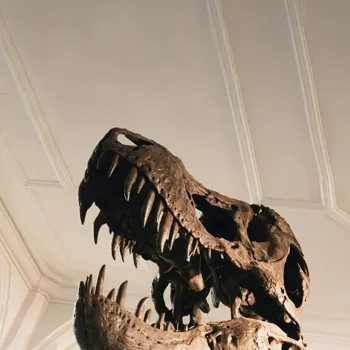
You can marvel at the towering skeletons of T-Rex, admire the intricate details of dinosaur skulls, and learn about the lives of these ancient creatures through interactive exhibits and displays. These museums are a great way to learn and appreciate dinosaurs.
Visiting a museum will certainly be a day filled with fun and education.
So there you have it – 10 fun facts about dinosaurs that we hope you found fascinating! These creatures may be long gone, but their legacy continues to inspire awe and wonder in people of all ages.
Keep exploring, keep asking questions, and keep digging for the truth about these magnificent animals! You never know what exciting new discoveries await!
AI Generated Content. Glance/InMobi shall have no liability for the content





